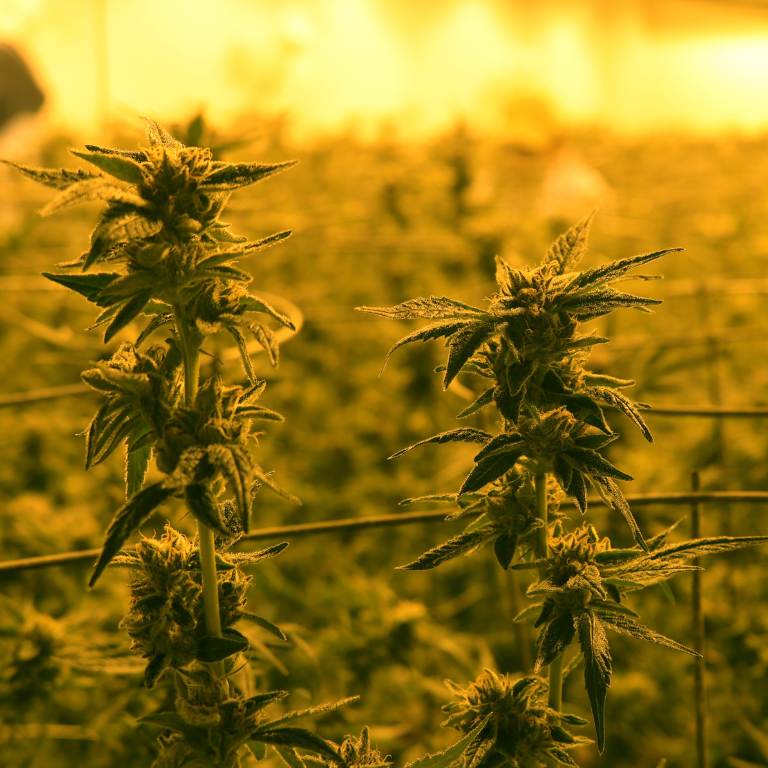Turning ‘No’ Into ‘Yes’: 7 Essential Steps for Ensuring a Safer and More Secure Cannabis Workplace
The cannabis industry is rapidly expanding, creating thousands of jobs across cultivation, manufacturing, distribution, and retail sectors. However, workplace safety in cannabis businesses remains a critical issue, often overlooked amid the rush to establish and grow operations. Unlike traditional industries, cannabis businesses face unique safety challenges, including compliance with state and federal laws, handling of hazardous substances, and security risks.
Ensuring a safe work environment is not just about following regulations—it’s about protecting employees, maintaining operational efficiency, and fostering a positive workplace culture. By turning ‘No’ into ‘Yes’—from unsafe conditions to proactive safety measures—cannabis employers can create a secure and compliant workplace.
Here are seven crucial steps for making cannabis work safer while improving compliance, productivity, and employee well-being.
Step 1: Implementing Comprehensive Safety Training Programs for All Employees in the Cannabis Industry
One of the most effective ways to ensure workplace safety is through education and training. Employees must be aware of potential hazards and know how to handle risks appropriately.
Why Training Is Crucial for a Safe Cannabis Workplace
Employees work with heavy machinery, hazardous chemicals, and flammable materials in cultivation and extraction facilities.
Dispensary workers handle large sums of cash, making them potential targets for robbery and theft.
Without proper training, employees may misuse personal protective equipment (PPE), leading to injuries or exposure to harmful substances.
Key Safety Training Areas for Cannabis Businesses
Workplace ergonomics: Reducing strain and injury risks for employees working long hours.
Chemical safety: Proper handling of fertilizers, solvents, and extraction chemicals.
Fire prevention: Addressing fire hazards associated with cannabis production.
Security protocols: Teaching employees how to respond to security threats.
First aid and emergency response: Ensuring preparedness for medical emergencies.
Comprehensive safety training empowers employees, helping them recognize and prevent hazards before accidents occur.
Step 2: Strengthening Physical Security Measures to Protect Cannabis Facilities and Employees
Due to federal banking restrictions, many cannabis businesses operate cash-heavy operations, making them a prime target for theft and criminal activity. Ensuring strong security measures is essential for protecting employees, customers, and assets.
Critical Security Measures for Cannabis Workplaces
High-quality surveillance systems: Installing cameras in cultivation, processing, and retail areas to deter theft.
Access control systems: Using badge scanners and biometric entry systems to limit facility access.
Armed security personnel: Hiring trained security staff for high-risk locations.
Cash management protocols: Reducing on-site cash storage and implementing secure transportation methods.
By investing in security infrastructure, cannabis businesses can minimize risks, prevent losses, and create a safer working environment for employees.
Step 3: Enforcing Strict Compliance with Occupational Health and Safety Regulations for Cannabis Employees
The cannabis industry is subject to various health and safety regulations, including those from OSHA (Occupational Safety and Health Administration) and state-specific agencies. Failing to comply with these laws can result in penalties, shutdowns, and legal liabilities.
Key Areas of Compliance for Cannabis Workplaces
Proper use of Personal Protective Equipment (PPE): Gloves, masks, and eye protection for employees handling plants, chemicals, and machinery.
Ventilation and air quality control: Preventing exposure to airborne contaminants in grow rooms and extraction labs.
Noise protection: Providing ear protection for workers in loud processing facilities.
Employee rights awareness: Educating workers on their right to report unsafe conditions without retaliation.
Strict compliance with health and safety regulations ensures cannabis businesses operate legally and ethically while protecting their workforce.
Step 4: Establishing a Workplace Culture That Prioritizes Safety, Well-Being, and Open Communication
Creating a safe work environment isn’t just about policies and procedures—it’s about building a culture where employees feel valued, heard, and protected.
How to Foster a Proactive Safety Culture in the Cannabis Industry
Encourage employees to report hazards without fear of retaliation.
Hold regular safety meetings to discuss workplace risks and improvements.
Recognize and reward employees who follow best safety practices.
Provide mental health support for employees dealing with stress or workplace pressures.
When safety becomes a shared responsibility, employees take greater ownership of their well-being, leading to fewer accidents and a more positive work environment.
Step 5: Reducing Exposure to Hazardous Chemicals and Improving Air Quality in Cannabis Cultivation and Processing
Many cannabis businesses rely on chemical fertilizers, pesticides, and solvents for cultivation and extraction processes. Prolonged exposure to these substances can cause serious health risks for employees.
Strategies to Minimize Chemical Exposure in Cannabis Facilities
Switch to organic pest control to reduce reliance on toxic pesticides.
Ensure proper ventilation systems in grow rooms and processing labs.
Provide full PPE gear for workers handling solvents, fertilizers, and extraction chemicals.
Implement a hazardous material disposal plan to prevent environmental contamination.
Protecting employees from chemical exposure leads to healthier work conditions and better overall workplace safety.
Step 6: Addressing Workplace Injuries and Ergonomic Risks in Cannabis Retail and Cultivation Jobs
Cannabis jobs often involve long hours of standing, repetitive motions, and heavy lifting, increasing the risk of musculoskeletal injuries.
Common Workplace Injuries in the Cannabis Industry
Back and joint pain from repetitive movements in cultivation.
Carpal tunnel syndrome from trimming cannabis plants.
Slip and fall accidents in processing and retail areas.
Solutions for Reducing Workplace Injuries in Cannabis Jobs
Implement ergonomic workstations for trimmers and budtenders.
Train employees on safe lifting techniques.
Provide anti-fatigue mats for employees who stand for long periods.
Ensure proper lighting and clear pathways to prevent trips and falls.
By addressing ergonomic risks, cannabis businesses can prevent long-term health problems for employees.
Creating an Emergency Preparedness Plan for Cannabis Businesses to Handle Unexpected Incidents
Emergencies can happen in any workplace, but cannabis businesses face unique risks that require specialized preparedness plans.
Essential Elements of a Cannabis Workplace Emergency Plan
Fire and explosion response for grow facilities and extraction labs.
Active shooter and robbery preparedness for dispensaries.
Medical emergency protocols for handling workplace injuries.
Evacuation plans for all employees and customers.
By preparing for worst-case scenarios, cannabis businesses can minimize harm and ensure employee safety in critical situations.
Creating a Safer Cannabis Workplace by Turning ‘No’ Into ‘Yes’
The cannabis industry must prioritize safety just as much as profitability. By implementing these seven steps, cannabis businesses can turn unsafe practices into proactive safety measures that protect employees, customers, and business operations.
A safer workplace leads to happier employees, fewer accidents, and greater long-term success in the cannabis industry.















